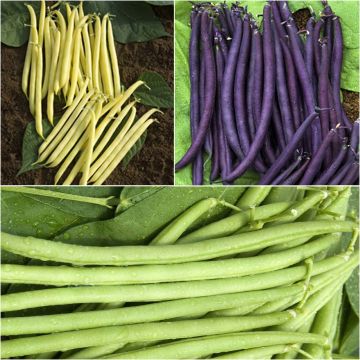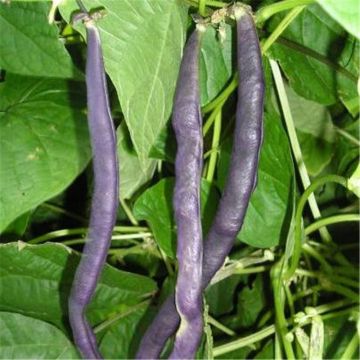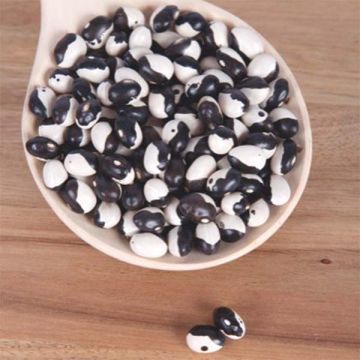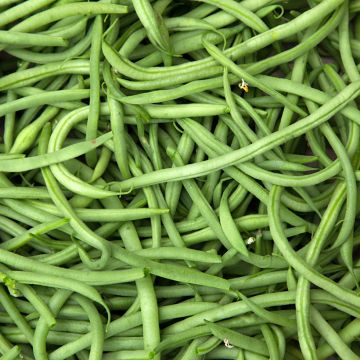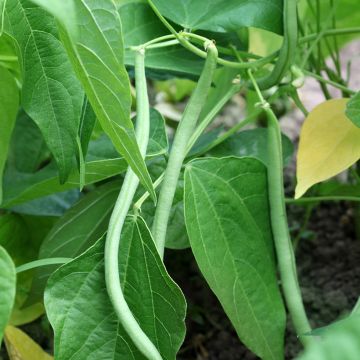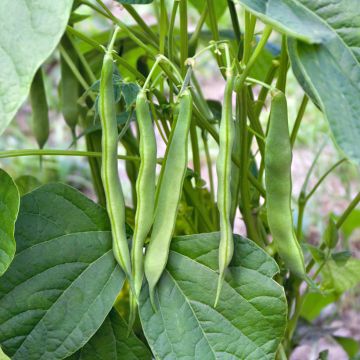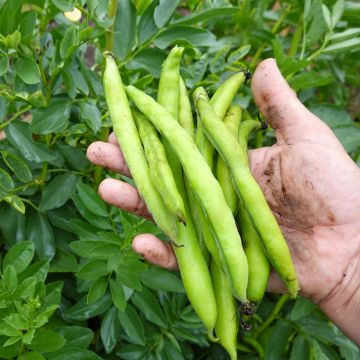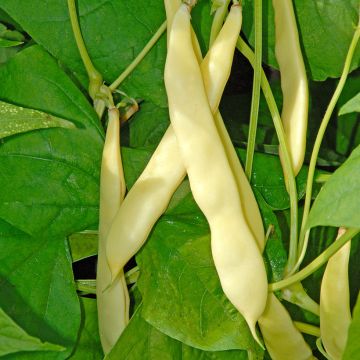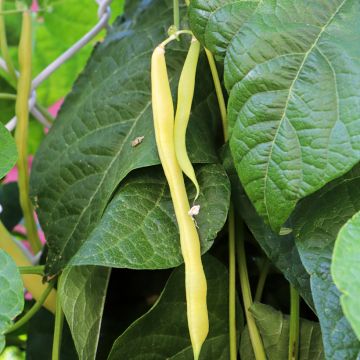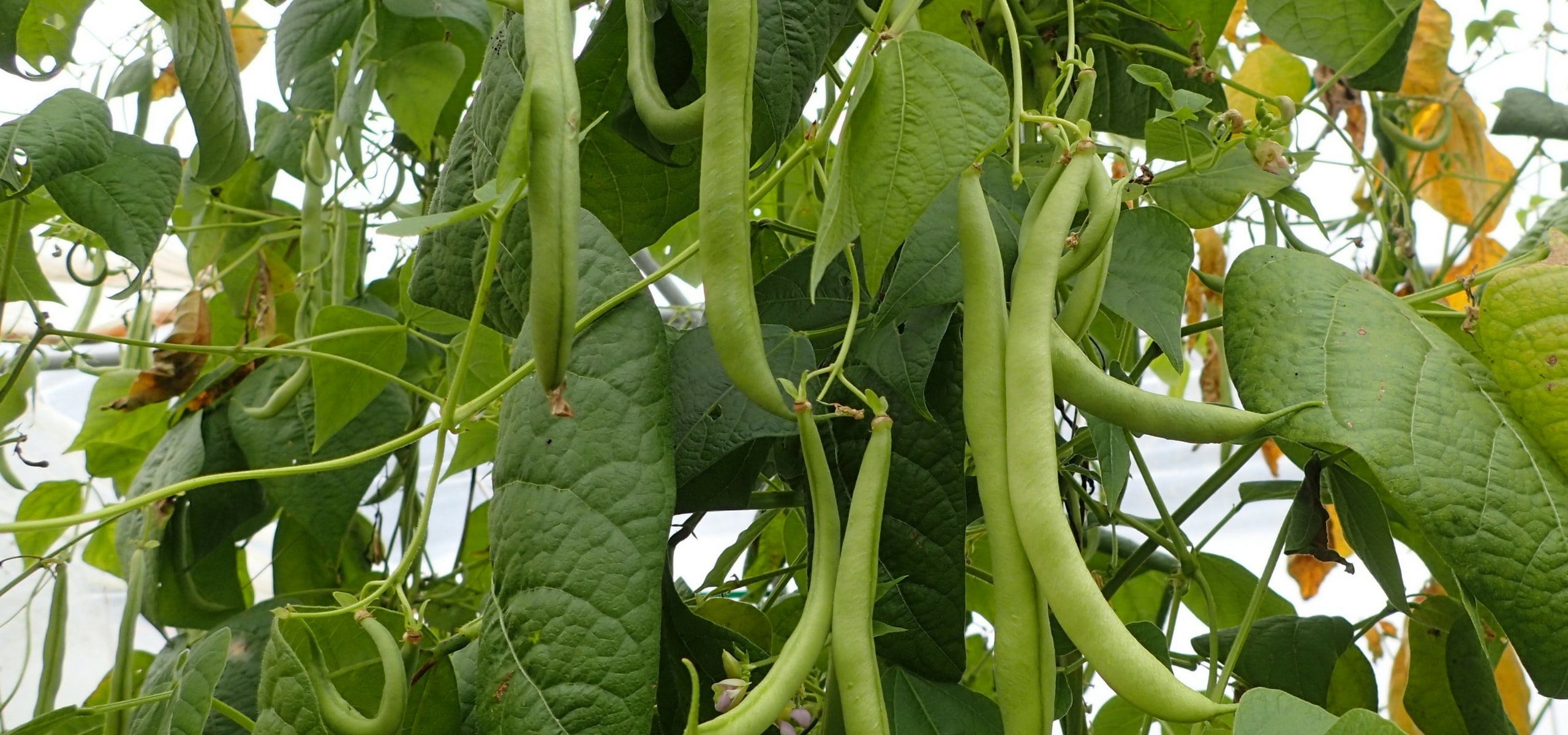
Growing beans: tips and tricks
Everything you need to know about sowing, caring, and harvesting them
Contents
Beans (Phaseolus vulgaris) with their diversity of shapes, colours, and flavours, are essential legumes in the vegetable garden. String beans, snap beans, shell beans, Spanish beans, dwarf beans, or climbing beans, the choice is vast, and their fruit lends itself to all culinary variations. They are grown for their immature and fresh pods (green bean) or for their shelled grains, which can be consumed dry or semi-dry. The pods are generally green, sometimes yellow (butter bean), striated with red, or even purple. They provide a rich source of protein, fibre, and vitamins. Easy to grow, they require good garden soil, sunlight, and warmth to bear fruit. Follow our tips for successfully growing beans in the vegetable garden and enjoy them in all their forms.
→ Discover our complete guide on the Bean
Types of beans and their characteristics
A bean, beans! Beans come in several varieties, each with its own specifics:
- Shell beans: They are harvested for their seeds. They can be consumed dried or fresh, depending on the variety.
- String beans and those without strings offer a tender texture, without the hassle of unpleasant strings.
- Snap beans: Their entire pod is edible, making them highly appreciated vegetables for their ease of preparation.
- Spanish beans: Known for their large pods and beautiful flowers, they can be used as shell beans or green beans.
- Dwarf beans and climbing beans: They are distinguished by their growth habit, with dwarf beans being more compact, while climbing beans require support to grow upwards.
Where to sow beans?
Choose a sunny spot, but not scorching and sheltered from the wind. Low-maintenance, beans adapt to all soils, even ordinary ones, but prefer light, fertile, low-calcium soil that is well-drained. Avoid overly wet or too rich soils, which would encourage foliage growth at the expense of the pods.
Discover other Bean seeds
View all →Available in 0 sizes
Available in 1 sizes
Available in 1 sizes
Available in 1 sizes
Available in 1 sizes
Available in 1 sizes
Available in 1 sizes
Available in 1 sizes
Available in 1 sizes
Available in 1 sizes
When to sow beans?
Sowing of beans takes place in open ground after the last frosts, from May to mid-August, in warmed soil, starting in April in southern regions or from May further north. Sensitive to cold, it requires the soil to have reached a minimum of 15°C before being sown. Under a frame or tunnel, sowing of beans can begin as early as mid-March.
How to sow beans?
To prepare the soil for sowing, start by loosening the ground without turning it over using a broadfork or a digging fork. Then, remove weeds manually or with a rake and level the surface of the flowerbed. You should have amended the soil well in advance with compost or well-rotted manure. Its large seeds are sown directly in the soil, in rows or in clusters.
Sowing in open ground
- The day before sowing, soak the bean seeds in warm water to aid germination.
- Make furrows 3 to 4 cm deep, spacing them 40 cm apart for dwarf varieties and 70 cm for those requiring supports.
- Water generously along the furrows with a watering can.
- Sow the seeds in a line, spacing them 5 to 7 cm apart, or in clusters of 4 to 5 seeds at intervals of 40 cm.
- Cover the seeds with soil and use the back of a rake to lightly firm down.
- After germination, resume regular watering.
Sowing under frames
Ensure that the soil temperature is at least 15°C, which is necessary for the development of the bean, a vegetable that is sensitive to cold. Position your frames so that they are exposed to the south or west to maximise sunlight. Ventilation of the frames should be done during the warmest hours to promote good air circulation, while ensuring that the coverings are only removed when the risk of frost has definitely passed.
Bean care for a bountiful harvest
Watering
Beans require no special care apart from occasional waterings during dry weather. Watering should be done at the neck, at the base of the young plants.
Hoeing and Weeding
It is useful to mound the young plants from the stage of the first two leaves. A slight furrow can be formed along the mounding line to facilitate and conserve watering, which should preferably be done at the neck of the watering can. Once the young plants are well developed, we recommend mulching the soil. If you leave the soil naked, you will need to carry out regular weeding and hoeing to prevent the appearance of “weeds”.
Staking Climbing Beans
Climbing beans such as ‘Phénomène’ or ‘Melissa’ need supports: these can consist of stakes 2 to 3 metres high, trellis netting, Canadian tents, tipis, and even young plants of corn to which they will cling as they grow. Any tall element can become a support for this type of bean, which then takes on a very aesthetic appearance.
To learn more about staking techniques, consult our advice sheet.
When and how to harvest beans?
Harvest
The first harvests take place approximately 60 days after sowing and continue until the end of October. Feel free to stagger your bean sowings every 15 days for a continuous harvest until the end of autumn. Harvesting occurs approximately every 2 to 3 days for fillet beans (at the fine or extra-fine stage), simply by detaching the pods. For fresh beans, harvesting should be done when the pods are firm and well-formed, before they become fibrous and start to dry out. For shelling beans, wait until the seeds are well-formed and the pods have become brittle. The harvest of dry grains will be done by cutting the entire plant, which should then be suspended in a dry, airy place.
Storage Tips
For beans intended to be stored dry, allow them to dry completely in the open air or in a well-ventilated area before storing. Place the beans in airtight containers, such as glass jars or zip-lock plastic bags, to protect them from moisture and pests.
- For fresh beans, store them in the refrigerator where they will last for about a week. They can also be blanched (immersed for a few minutes in boiling water and then quickly cooled) before being frozen, which helps preserve their texture and flavour for long-term storage.
- Dry beans can be stored in a cool, dry place away from light for several months to a year.
Fighting against diseases and pests
Beans generally grow without any issues. In general, snap beans are less susceptible to diseases. However, among the possible pests, there are aphids and the bruchid. While aphid attacks can easily be managed with sprays of water mixed with black soap (20% dilution), combating the bruchid is more complicated. However, there’s no need to worry: this insect overwinters in the seeds, and commercial seeds are cleaned, so the risk is low.
Diseases are quite rare and, when they do occur, they are most often fungal: powdery mildew, bean rust, anthracnose, sclerotinia… To prevent them, do not water the foliage and respect planting distances.
To combat the mosaic virus, control aphids that weaken the plant and choose particularly resistant varieties, such as ‘Argus’, ‘Castandel’ or ‘Delinel’.
Beneficial plant associations
In the vegetable garden, beans are good companions, as they can be planted alongside almost all vegetables. Beans pair very well with squashes and corn, but also with aubergines, carrots, cabbages, potatoes, and radishes, as they mutually protect each other while reducing the risk of diseases. However, avoid planting them next to alliums such as leeks, garlic, onions, shallots, fennel, and other legumes such as peas and broad beans.
- Subscribe!
- Contents































